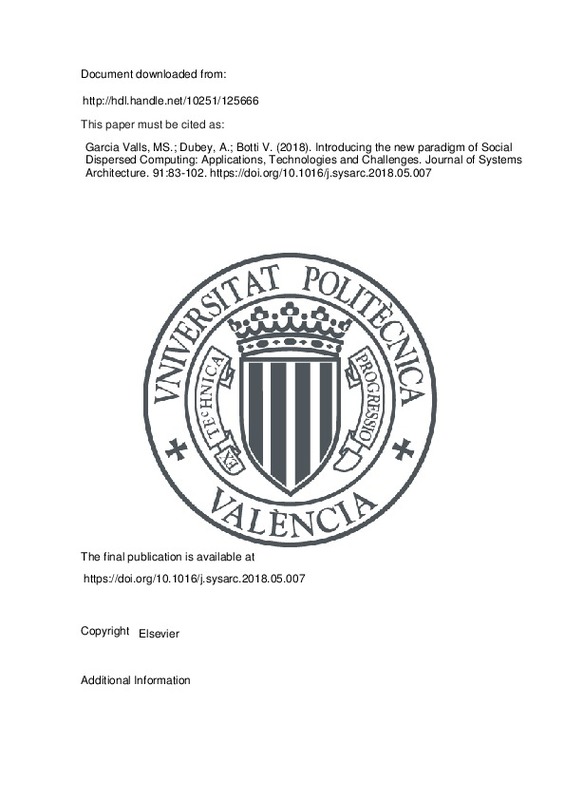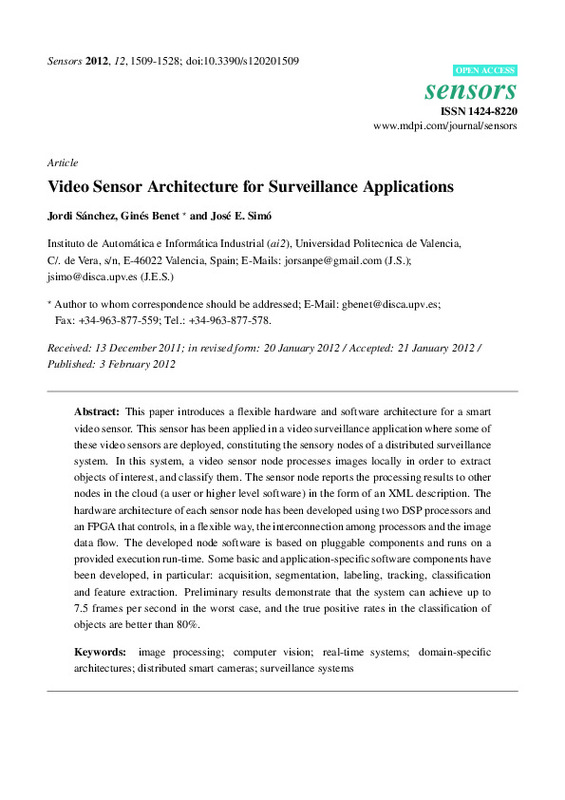JavaScript is disabled for your browser. Some features of this site may not work without it.
Buscar en RiuNet
Listar
Mi cuenta
Estadísticas
Ayuda RiuNet
Admin. UPV
Desde el lunes 3 y hasta el jueves 20 de marzo, RiuNet funcionará en modo de solo lectura a causa de su actualización a una nueva versión.
Introducing the new paradigm of Social Dispersed Computing: Applications, Technologies and Challenges
Mostrar el registro completo del ítem
Garcia Valls, MS.; Dubey, A.; Botti, V. (2018). Introducing the new paradigm of Social Dispersed Computing: Applications, Technologies and Challenges. Journal of Systems Architecture. 91:83-102. https://doi.org/10.1016/j.sysarc.2018.05.007
Por favor, use este identificador para citar o enlazar este ítem: http://hdl.handle.net/10251/125666
Ficheros en el ítem
Metadatos del ítem
| Título: | Introducing the new paradigm of Social Dispersed Computing: Applications, Technologies and Challenges | |
| Autor: | Garcia Valls, Maria Soledad Dubey, Abhishek | |
| Entidad UPV: |
|
|
| Fecha difusión: |
|
|
| Resumen: |
[EN] If last decade viewed computational services as a utility then surely
this decade has transformed computation into a commodity. Computation
is now progressively integrated into the physical networks in
a seamless ...[+]
|
|
| Palabras clave: |
|
|
| Derechos de uso: | Reserva de todos los derechos | |
| Fuente: |
|
|
| DOI: |
|
|
| Editorial: |
|
|
| Versión del editor: | https://doi.org/10.1016/j.sysarc.2018.05.007 | |
| Código del Proyecto: |
|
|
| Tipo: |
|







![[Cerrado]](/themes/UPV/images/candado.png)




